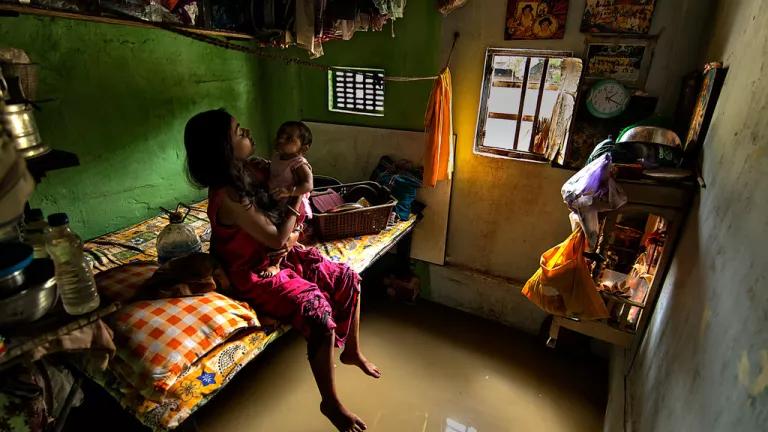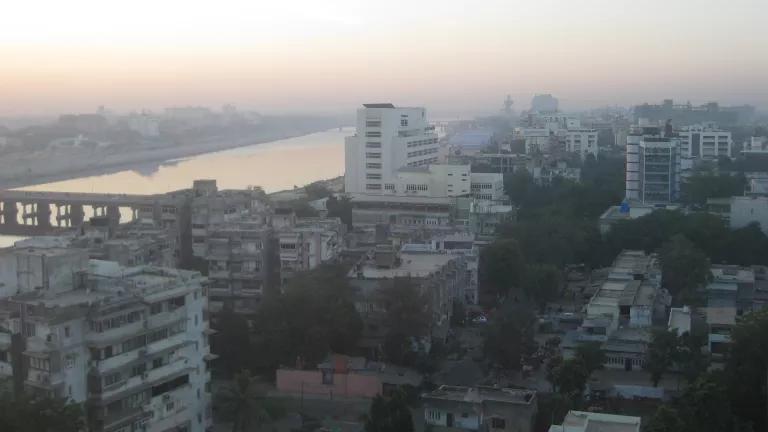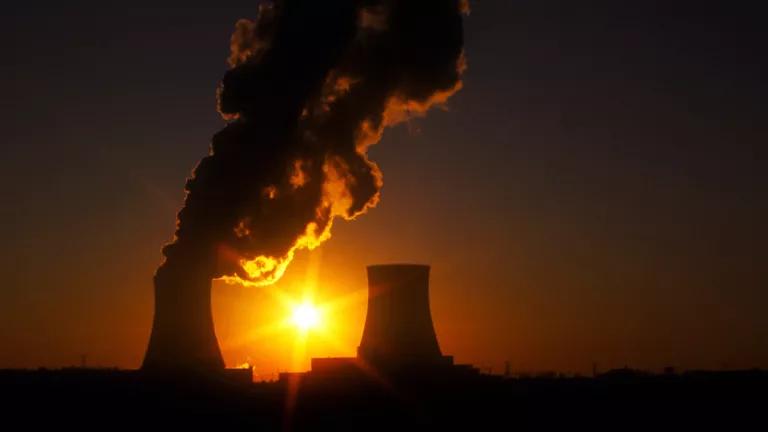Lancet Offers Grim Assessment of Climate Change and Health
The argument that it costs too much to tackle climate change is becoming increasingly absurd as endless disasters rampage across the country and rising temperatures silently steal the lives of our loved ones.

Mid-morning wildfire smoke in San Francisco, California, September 2020.
The world is mostly failing to respond to the climate crisis, leading to an “unabated rise” in heat-related deaths, exposure to wildfire smoke and infectious disease, and threats to food and water security. That’s the main finding from the 2021 Lancet Countdown, the sixth such annual report card on how climate change is affecting our health. The report comes at a critical moment, as Congress debates how much to invest in climate policies and international climate negotiators prepare to meet for the first time in two years.
Extreme heat plays a starring role in this year’s Countdown. That’s not surprising, given the evidence that pollution from fossil fuel use is driving up the intensity, frequency, and duration of heatwaves. Heat also has far-reaching consequences for our health, causing or contributing to dozens of debilitating or deadly illnesses.
Here are some of the main heat findings in the 2021 Lancet Countdown.
Nearly every nation’s vulnerability to life-threatening heat has increased since 1990
Vulnerability to heat is a combination of:
- High exposure to heat, e.g., based on zip code;
- High sensitivity to heat, e.g., due to pre-existing medical conditions; and
- A reduced capacity to respond to heat, e.g., due to poverty.
Nearly every nation in the world has become more vulnerable to heat over the last 30 years, as seen in the animated map below from the Lancet Countdown’s data visualization tool.
It might surprise you that the United States is one of the most heat-vulnerable nations in the world, due to our relatively large urban population, high proportion of older adults, and high prevalence of chronic diseases such as diabetes.
Exposure to dangerous heat is increasing in the most vulnerable age groups
Very young children (those under 1 year old) and older adults (over 65 years old) are more vulnerable to unhealthy levels of heat in part because they sweat less than others. As temperatures climb and the global population grows, the youngest and oldest among us are being exposed to billions more hours of unhealthy heat than in past decades.
In the United States, older adults collectively experienced nearly 300 million more heatwave days in 2020 than the long-term average (from 1986 to 2005). Very young children collectively experienced nearly 22 million more heatwave days.
Heat-related deaths are on the rise among older adults
Increased exposure to extreme heat is having deadly consequences for adults over 65. Heat-related illnesses caused an estimated 345,000 deaths in 2019, a new record. And, the annual number of heat-related deaths among older adults has increased dramatically in every region since 2005. (See the graph below.)

While the United States has fared better than most regions, it’s notable that increases in heat-related deaths across the nation outstrip the average for the world’s wealthiest countries (“Very High HDI group” in the graph).
Billions of hours of potential work are lost each year to heat
Extreme heat also can cut into take home pay by reducing worker productivity, reducing safe working hours, or temporarily shuttering businesses. This has potentially long-lasting effects on the health and well-being of people living on the economic edge.
The Lancet Countdown estimates that extreme heat in 2020 led to the loss of 295 billion potential work hours worldwide in construction, agriculture, service, and industry—the equivalent of 88 hours per worker. The harm was particularly staggering in Pakistan, India, and Bangladesh, which each lost the equivalent of well over 200 hours per worker. Importantly, these heat-related losses layered onto the severe financial hardship of the COVID-19 pandemic.
In the United States, workers lost at least 1.9 billion hours to extreme heat in 2020, compared to 1.2 billion hours in 1990. As with so many of the impacts of climate change, heat-related losses in income fall more heavily on some populations than others. According to one new study, low-wealth counties in the United States experience larger payroll losses on hot days than high-wealth counties. Absent adaptation measures, workers in the richest counties could lose the equivalent of a tenth of a year of pay over the period of 2040 to 2050, versus about half a year of pay in the poorest counties.
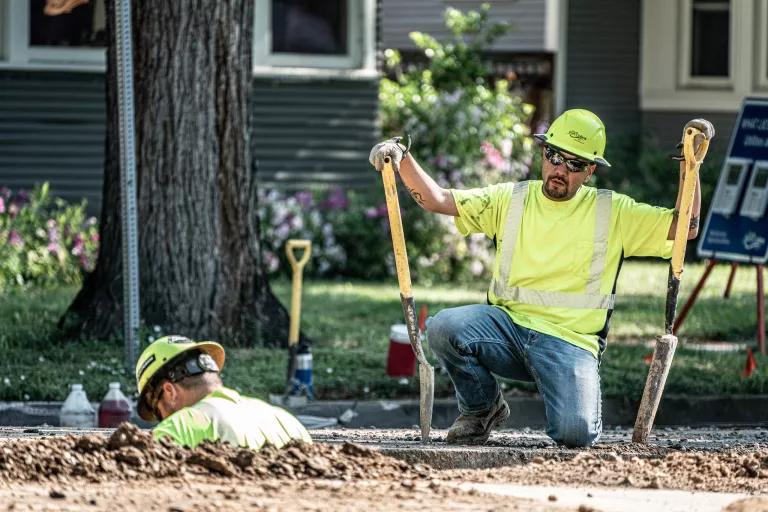
Most countries—including the United States—have insufficient urban green space to keep people cool
Trees and other vegetation are important tools for keeping cities cool and saving lives from deadly heat. In Baltimore, Maryland, for example, researchers estimate that the city’s tree cover (based on 2011 data) saves nearly 550 people from premature death every year during the warm season.
Yet Baltimore is among a minority of urban centers worldwide with at least moderate amounts of green space. The Lancet Countdown estimated that close to 75 percent of 1,029 urban centers across 168 countries had low or very low levels of greenness in 2020.
As the Lancet team points out, this high-level estimate doesn’t capture how accessible green space is to heat-vulnerable populations. We know from multiple U.S. studies that low-income communities and communities of color have deeply inequitable access to parks and other natural areas—putting them in the crosshairs of deadly heatwaves.
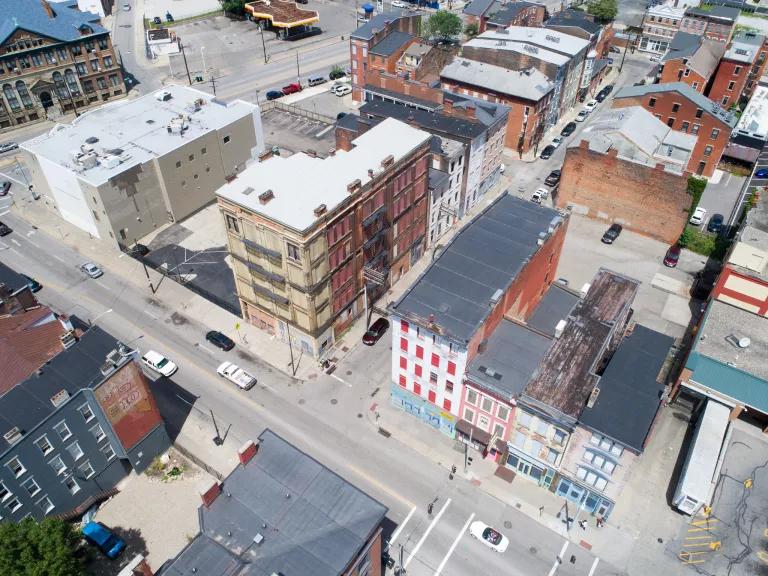
The Over-The-Rhine (OTR) neighborhood in Cincinnati, Ohio, a formerly redlined area that is now rapidly gentrifying. According to the Cincinnati Parks Foundation, OTR had 13 percent tree canopy in 2021.
Policy recommendations
The recommendations in the U.S. Policy Brief accompanying this year’s global Lancet Countdown will probably sound familiar. That’s because they are—echoing decades of calls to address the climate crisis with the gravity and urgency it deserves. (Full disclosure: NRDC was part of the working group that reviewed the U.S. Brief.)
First, every level of government needs to rapidly increase funding for evidence-based and equitable health protections. The Biden-Harris administration has taken some encouraging steps in recent months to better protect U.S. residents from heat, including a package of initiatives from the Interagency Working Group on Extreme Heat, a new Office of Climate Change and Health Equity (OCCHE), and the first federal climate adaptation plans since 2014. However, these efforts are all underfunded. For example, OCCHE reportedly has a budget of just $3 million per year. That’s a pittance for a tiny office with a huge mission: “To protect the health of people throughout the U.S. in the face of climate change, especially those experiencing a higher share of exposures and impacts.” And one of the common themes in the adaptation plans I’ve read so far is a lack of staff and budget capacity to implement some of the priority actions.
Second, decisionmakers need to incorporate the full health costs of climate change—and benefits of climate action—into policymaking. The argument that it costs too much to tackle climate change is becoming increasingly absurd as endless disasters rampage across the country and rising temperatures silently steal the lives of our loved ones. But none of that matters unless official decision-making tools, such as cost benefit analyses, give us a more complete picture of the peril of inaction.
Third, we need to drastically limit the pollution causing climate change. Climate adaptation is essential, but we can’t fully adapt our way out of this mess. Tree planting helps, but it won’t save us on its own. We must urgently and equitably cut climate-changing pollution across every sector of our economy to give future generations a chance to survive and thrive.
The news from this year’s Lancet Countdown is bleak, but it also offers a path forward. We don’t have to, as Countdown author Dr. Jeremy Hess put it last week, “continue to subsidize our own demise." Rather, we must see this year’s report as a rallying cry, and fight to turn the trends in future reports in the right direction.


